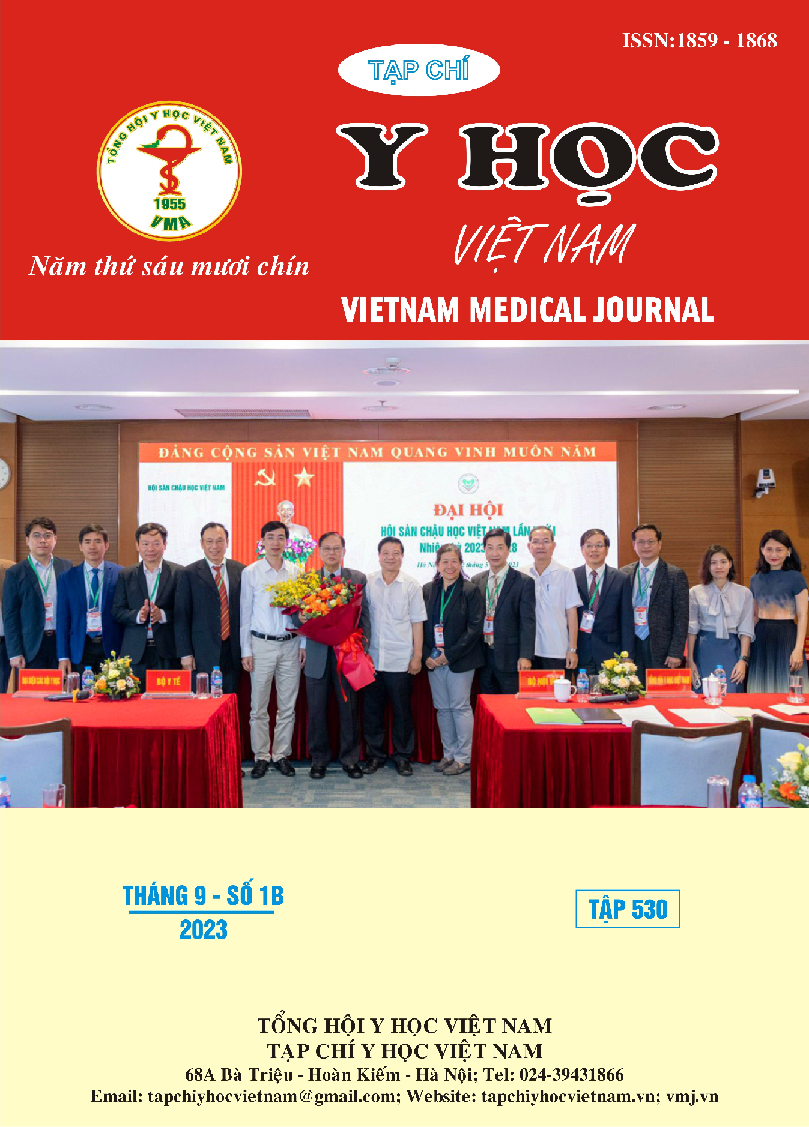COMPARISION THE EFFECT OF TARGET CONTROLLED BETWEEN ET CONTROL SEVOFLURANE AND TCI PROPOFOL UNDER THE GUIDANCE OF DIGITIZED EEG
Main Article Content
Abstract
Objective: To compare the effect of induction and release of anesthesia under anesthesia according to the target concentration between the two methods of ET - control sevoflurane and TCI - propofol under the guidance of digitized EEG. Methods: The study included 60 patients divided into 2 groups. Group 1 (n = 30) used ET Control Sevoflurane target anesthesia on an Aisys CS2 anesthesia machine, group 2 (n = 30) used TCI Propofol target concentration anesthesia on an open-system electric syringe Terumo. Results: The time to lose consciousness of group 1 patients (54.9 ¬ ± 11.2) was faster than group 2 (72.2 ± 6.0), waiting time for intubation had no statistically significant difference (130.6 ± 9.7 versus 131.2 ± 11.7). Time out of anesthesia, group 1 was faster than group 2 (179.6 ± 6.1 versus 260.1 ± 5.4). At the time the patient lost consciousness (group 1 SE = 68.2 ± 1.5 group 2 SE = 68.3 ± 0.9) corresponding to the highest MAC value = 1.7 at the time of anesthesia. At the time of intubation (group 1 SE = 40.7 ± 0.9, group 2 SE = 40.7 ± 1.2) corresponding to the highest Ce = 3.8 value in the time of anesthesia. In the period of recovery from anesthesia, the SE values gradually increased to the value when the patient was awake (the maximum SE value at T12 time was 91.1 ± 0.3 and 91.5 ± 0, respectively. 3, respectively, the MAC and Ce values decrease gradually and reach the lowest value in the time of anesthesia Conclusion: Under the guidance of digitized EEG, ET Control is a program of anesthesia according to the target concentration of ET Control. Volatile anesthetics are more effective in induction and release of anesthesia.
Article Details
Keywords
ET control, target concentration controlled anesthesia, Entropy, TCI propofol.
References
2. 2. HVB Nguyễn Quốc Kính, Công Quyết Thắng. “Khởi mê tĩnh mạch bằng kỹ thuật propofol_TCI kết hợp theo dõi độ mê bằng ENTROPY.” Tạp trí y học. 2011:11-13.
3. HOÀNG VĂN BÁCH. Nghiên cứu điều chỉnh độ mê theo điện não số hoá bằng nồng độ đích tại não hoặc nồng độ phế nang tối thiểu của thuốc mê. Published online 2012.
4. Toru Komatsu, Tomomasa Kimura and Kiyoshi Horiba. A Comparison of State and Response Entropy of Electroencephalogram with Changes in Entropy of Heart Rate Variability during Induction of Anesthesia.; 2004.
5. P PM, G F, P P. Bispectral index and spectral entropy in neuroanesthesia. Journal of neurosurgical anesthesiology. 2006;18(3). doi:10.1097/01.ana.0000206229.38883.d2
6. Bohomme V., Delfandre E., Brichant J. F., Dewandre P. Y and Hans P. Correlation and Concordance between BIS and State Entropy during Target-Controlled Infusion of Propofol. 1986


